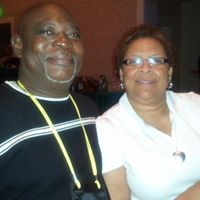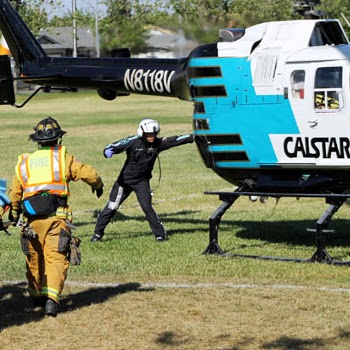Charles E Hood
age ~58
from Rockford, IL
- Also known as:
-
- Charles West Warren
- Charles W Warren
- Charlese Hood
- Charles Wwarren
- Charleyw Warren
- Charley Warren
- Christine Hannon
Charles Hood Phones & Addresses
- Rockford, IL
- Downers Grove, IL
- Lombard, IL
- Chicago, IL
- Fort Smith, AR
- 7308 S Prairie Ave, Chicago, IL 60619 • 773 306-9892
Work
-
Position:Administrative Support Occupations, Including Clerical Occupations
Education
-
Degree:Bachelor's degree or higher
Emails
Us Patents
-
Assembly For Mounting A Radio Frequency Antenna To A Communication Device
view source -
US Patent:55767206, Nov 19, 1996
-
Filed:Feb 3, 1995
-
Appl. No.:8/383393
-
Inventors:Harold J. Gorenz - Lisle IL
William R. Groves - Naperville IL
Charles D. Hood - Elmhurst IL -
Assignee:Motorola, Inc. - Schaumburg IL
-
International Classification:H01Q 124
H01Q 150 -
US Classification:343702
-
Abstract:A mounting assembly to attach an radio frequency antenna to a housing of a communication device for removably securing the antenna to the communication device, the assembly includes an antenna and a circular base member extending from the antenna. The assembly allows for the quick and easy detachment of the antenna from the device without the use of tools. The communication device to which the antenna assembly is attached has a generally tubular shaped opening defining a communication device housing having a circular cross-section for removably receiving the circular base member. The housing includes an outside face, an inside face, and a recessed locking slot extending from the outside face towards the inside face. Also included are mating members for connecting a portion of the circular base member to the RF coupling and a non-contiguous locking band coaxially surrounding a portion of the circular base member for providing slidably frictional rotation of the base member within the locking band and configured to axially retain the circular base member within the locking band. The locking band has a radially projecting tongue adapted to engage the recessed locking slot to prevent rotation of the locking band relative to the housing while permitting rotation of the circular base member.
-
Apparatus For Non-Disruptively Interconnecting Perpheral Device Modules With A Host Device
view source -
US Patent:56252382, Apr 29, 1997
-
Filed:Feb 3, 1995
-
Appl. No.:8/383394
-
Inventors:Roger W. Ady - Lisle IL
Charles D. Hood - Elmhurst IL
William R. Groves - Naperville IL -
Assignee:Motorola, Inc. - Schaumburg IL
-
International Classification:G06F 1300
-
US Classification:307147
-
Abstract:The apparatus permits non-disruptive addition and removal of PCMCIA modules from a host device. The host device includes a signal bus connected to mating pins of the card header. The card header has a three-sided frame into which a module is inserted. A switch disposed on an edge of the header is responsive to insertion and de-insertion of the module. The length of the mating pins vary where selected mating pins of the card header have a first length for detecting substantially complete insertion and partial de-insertion of the module, and pins of a second length for applying bus signals to the module. Pins of a third length facilitate applying electrical power to the module. The computer is responsive to the switch and the mating pins such that the signal bus is deactivated to prevent corruption of the bus signals when the switch detects insertion of the module. The signal bus remains deactivated until the module is in communication with pins of a first length, whereupon the signal bus is then reactivated. This prevents electrical transients from reaching the bus.
-
Antenna For Portable Communicator/Computer
view source -
US Patent:D3576833, Apr 25, 1995
-
Filed:Jul 2, 1993
-
Appl. No.:D/010417
-
Inventors:Edward A. Cline - Algonquin IL
Harold J. Gorenz - Lisle IL
Charles D. Hood - Elmhurst IL
Daniel K. Harden - Palo Alto CA
Mark B. Friesen - Palo Alto CA
Gary D. Schulz - Cary IL -
Assignee:Motorola - Schaumburg IL
-
US Classification:D14234
-
Hunting Control Side Bearing
view source -
US Patent:47152907, Dec 29, 1987
-
Filed:May 19, 1986
-
Appl. No.:6/864604
-
Inventors:Charles N. Hood - Deerfield IL
-
Assignee:AMSTED Industries Incorporated - DE
-
International Classification:B61F 514
-
US Classification:1051993
-
Abstract:A side bearing for railway cars mounted horizontally between truck and body bolsters to provide frictional engagement in a substantially vertical plane and having an elastomeric member to accommodate lateral movements. The elastomeric member is a resilient cartridge which is mounted to an upstanding flange of the side bearing's base. A friction member covers the end of the elastomeric member and also attaches to the upstanding flange.
-
Railcar Truck Bolster With Preassembled Friction Shoes
view source -
US Patent:48257753, May 2, 1989
-
Filed:Apr 20, 1987
-
Appl. No.:7/039944
-
Inventors:Eugene S. Stein - Lansing IL
Charles N. Hood - Deerfield IL
Charles P. Spencer - Staunton IL -
Assignee:AMSTED Industries Incorporated - Chicago IL
-
International Classification:B61F 524
B61F 550 -
US Classification:1051985
-
Abstract:Friction shoes are preassembled in each end of a railcar truck bolster by providing openings in the bolster and in the shoes and passing a restraining member through the openings at each bolster end and tensioning and securing the restraining members so as to hold the shoes within respective pockets in the bolster. The shoes and pockets are further provided with cooperating anti-ejection features to prevent ejection of shoes after installation.
Lawyers & Attorneys

Charles Edward Crossley Hood - Lawyer
view sourceAddress:
Cleary Gottlieb Steen & Hamilton
212 225-2718 (Office)
212 225-2718 (Office)
Licenses:
New York - Delinquent 1996
Education:
Cornell
Medicine Doctors

Charles E. Hood
view sourceSpecialties:
Internal Medicine
Work:
Charles E Hood MD
521 Wood Cv Rd, Scottsboro, AL 35768
256 259-1413 (phone), 256 259-4866 (fax)
521 Wood Cv Rd, Scottsboro, AL 35768
256 259-1413 (phone), 256 259-4866 (fax)
Education:
Medical School
Vanderbilt University School of Medicine
Graduated: 1967
Vanderbilt University School of Medicine
Graduated: 1967
Procedures:
Vaccine Administration
Cardiac Stress Test
Electrocardiogram (EKG or ECG)
Cardiac Stress Test
Electrocardiogram (EKG or ECG)
Conditions:
Abdominal Hernia
Acne
Acute Bronchitis
Acute Pharyngitis
Acute Renal Failure
Acne
Acute Bronchitis
Acute Pharyngitis
Acute Renal Failure
Languages:
English
Description:
Dr. Hood graduated from the Vanderbilt University School of Medicine in 1967. He works in Scottsboro, AL and specializes in Internal Medicine. Dr. Hood is affiliated with Highlands Medical Center.

Charles G. Hood
view sourceSpecialties:
Diagnostic Radiology
Work:
Dominion RadiologyLexington Medical Center Radiology
2720 Sunset Blvd, West Columbia, SC 29169
803 791-2460 (phone), 803 791-2519 (fax)
2720 Sunset Blvd, West Columbia, SC 29169
803 791-2460 (phone), 803 791-2519 (fax)
Education:
Medical School
University of South Carolina School of Medicine
Graduated: 1987
University of South Carolina School of Medicine
Graduated: 1987
Languages:
English
Spanish
Spanish
Description:
Dr. Hood graduated from the University of South Carolina School of Medicine in 1987. He works in West Columbia, SC and specializes in Diagnostic Radiology. Dr. Hood is affiliated with Lexington Medical Center.

Charles Edward Hood
view sourceSpecialties:
Family Medicine
General Practice
Internal Medicine
Hematology
General Practice
Internal Medicine
Hematology
Education:
Vanderbilt University (1967)

Charles Hardin Hood
view sourceSpecialties:
Family Medicine
General Practice
Emergency Medical Services
General Practice
Emergency Medical Services
Education:
University of Louisville(1959)
Name / Title
Company / Classification
Phones & Addresses
Manager
CH3, LLC
NILES PIZZA COMPANY, LLC
Incorporator
HUNTINGTON INDEPENDENT WOODWORKERS UNION
Incorporator
ELECTRIC APPLIANCE CO
Incorporator
FEDERAL LUMBER CO
Isbn (Books And Publications)
-
Red Sky, Red Water: Powell On The Colorado
view source -
Author:Charles Hood
-
ISBN #:0933313128
-
Red Sky, Red Water: Powell On The Colorado
view source -
Author:Charles Hood
-
ISBN #:0933313136
License Records
Charles H Hood
License #:
011937 - Expired
Category:
Real Estate
Type:
Principal Broker
Charles J Hood Jr
License #:
AB007778A - Expired
Category:
Real Estate Commission
Type:
Associate Broker (AB)-Standard
Charles O Hood
License #:
RS153794A - Expired
Category:
Real Estate Commission
Type:
Real Estate Salesperson-Standard
Resumes

United States Navy
view sourcePosition:
Sonar Technician at US Navy Reserve
Location:
Tempe, Arizona
Industry:
Biotechnology
Work:
US Navy Reserve since Oct 2006
Sonar Technician
US Navy Oct 2002 - Oct 2006
Sonar Technician
Sonar Technician
US Navy Oct 2002 - Oct 2006
Sonar Technician
Education:
Arizona State University 2012 - 2014
Professional Science Masters, Nanoscience Arizona State University 2007 - 2012
Bachelor's degree, Interdisciplinary Studies
Professional Science Masters, Nanoscience Arizona State University 2007 - 2012
Bachelor's degree, Interdisciplinary Studies
Interests:
bionanotechnology, investing, travelling, flying, running
Honor & Awards:
Army commondation medal, National defense medal, good conduct medal, Afghanistan campaign medal, global war on terror expeditionary medal

Charles Hood
view sourceLocation:
United States

Charles Hood
view sourceLocation:
United States

Command Master Chief At Unite States Navy
view sourceLocation:
Greater Chicago Area
Industry:
Military
Vehicle Records
-
Charles Hood
view source -
Address:8206 S Langley Ave, Chicago, IL 60619
-
Phone:773 910-0869
-
VIN:5TDDK3EH0CS134570
-
Make:TOYOTA
-
Model:HIGHLANDER
-
Year:2012

Charles Hood Sr.
view source
Charles Hood
view source
Charles Hood
view source
Charles A Hood
view source
Charles Hood
view source
Charles G Hood IV
view source
Charles A Hood
view source
Charles L. Hood
view sourceYoutube
Myspace
Classmates

Charles Hood
view sourceSchools:
Roeper School Bloomfield Hills MI 1991-1995
Community:
Barb Chapman

Charles David Hood
view sourceSchools:
Mart High School Mart TX 1953-1957
Community:
Helen Mitchell

Charles Hood
view sourceSchools:
Dade County High School Trenton GA 1998-2002
Community:
Stephanie Burns

Charles Hood
view sourceSchools:
Our Lady of Mount Carmel School Carmel IN 1965-1972, Larkin Elementary School Monterey CA 1972-1973
Community:
Brook Myers, Paula Hatcher

Charles Hood
view sourceSchools:
Our Lady of Mount Carmel School Carmel IN 1967-1975, Carmel Junior High School Carmel IN 1973-1976
Community:
Brook Myers, Paula Hatcher

Charles Hood
view sourceSchools:
Chopticon High School Morganza MD 1988-1992
Community:
Marilyn Brown, Brad Harvey, Heidi Howard

Charles Hood (Charles Hood)
view sourceSchools:
Charleston High School Charleston TN 1942-1946
Community:
Franklin Dunn, Byrl Shaver

Charles Hood
view sourceSchools:
Saint Peter School Belleville NJ 1998-2002
Community:
Alan Encke, Patricia Fantin, Liz Miller, Noel Franz
Plaxo

Charles Robin Hood
view sourceBullard, TexasSoftware Applications Engineer at Stemco LP

Charles Hood
view source
Thomas Charles Hood
view source
Charles Hood
view sourceIT Operations administrator at McAuley Woods and A...
Flickr
Googleplus

Charles Hood
Work:
Ericsson Network Systems (1993-1997)
GTE - Consultant (1997-1998)
Parsons Brinckerhoff - Project Manager (1998-2000)
Southwestern Bell Telecom - Consultant (2001-2004)
Hot Springs Village Real Esate - Agent (2004-2012)
Southwestern BellTelephone Company - Senior Engineer (1965-1991)
GTE - Consultant (1997-1998)
Parsons Brinckerhoff - Project Manager (1998-2000)
Southwestern Bell Telecom - Consultant (2001-2004)
Hot Springs Village Real Esate - Agent (2004-2012)
Southwestern BellTelephone Company - Senior Engineer (1965-1991)
Education:
Borger High School - Texas High School Curriculum, Frank Phillips College - Pre-engineering, Eastern New Mexico University - BA in Journalism

Charles Hood
Tagline:
Singel Father

Charles Hood

Charles Hood

Charles Hood

Charles Hood

Charles Hood

Charles Hood
Get Report for Charles E Hood from Rockford, IL, age ~58





















